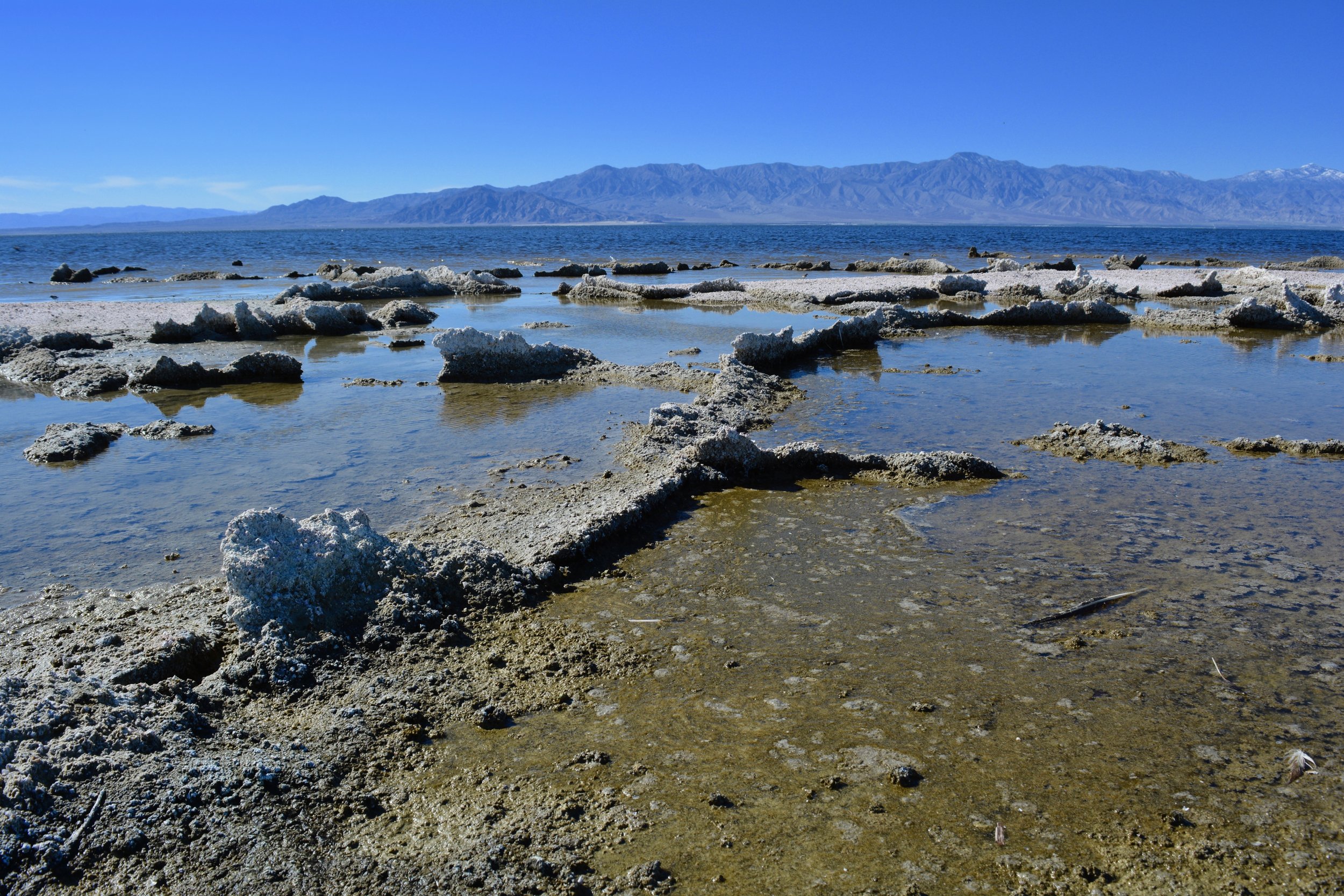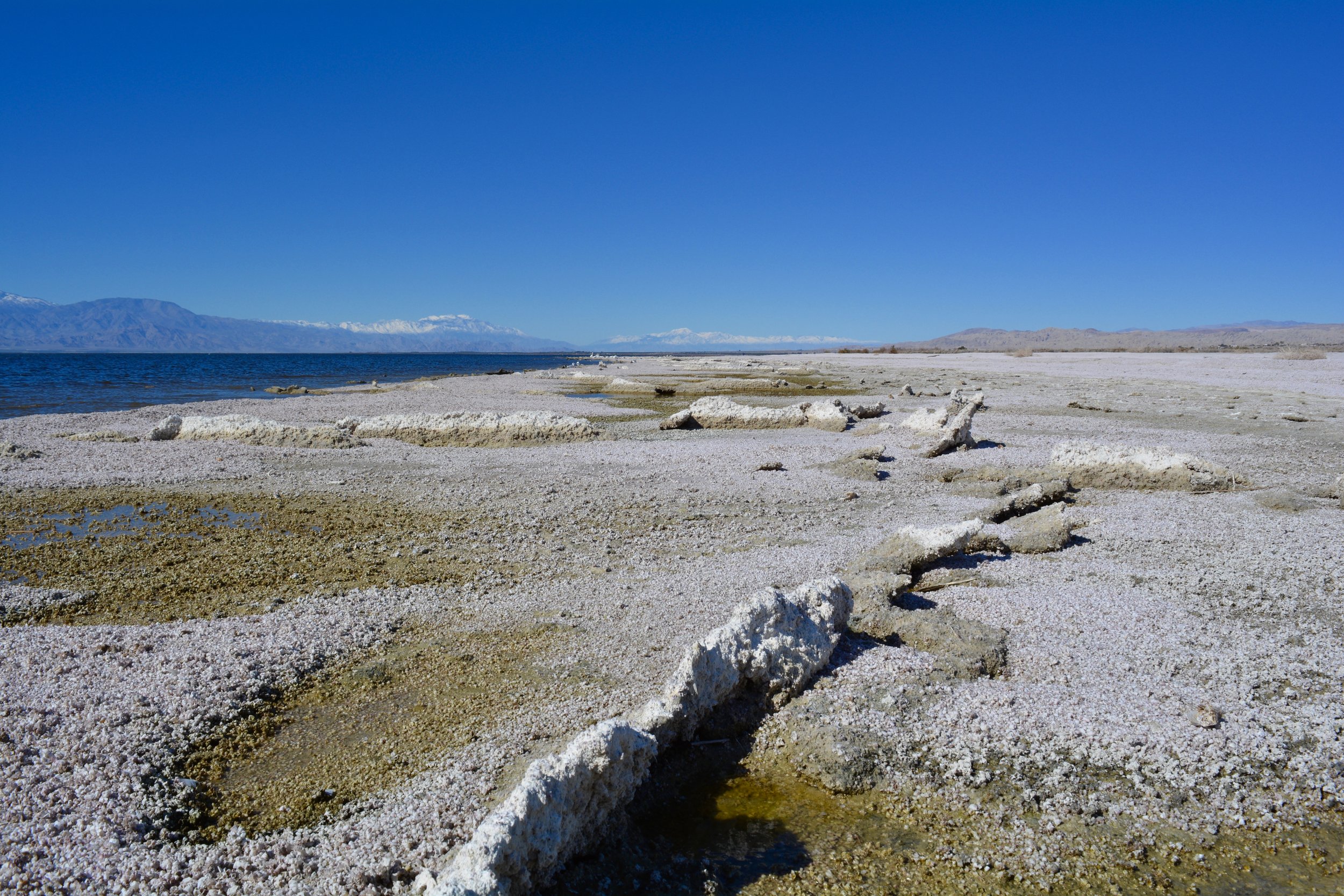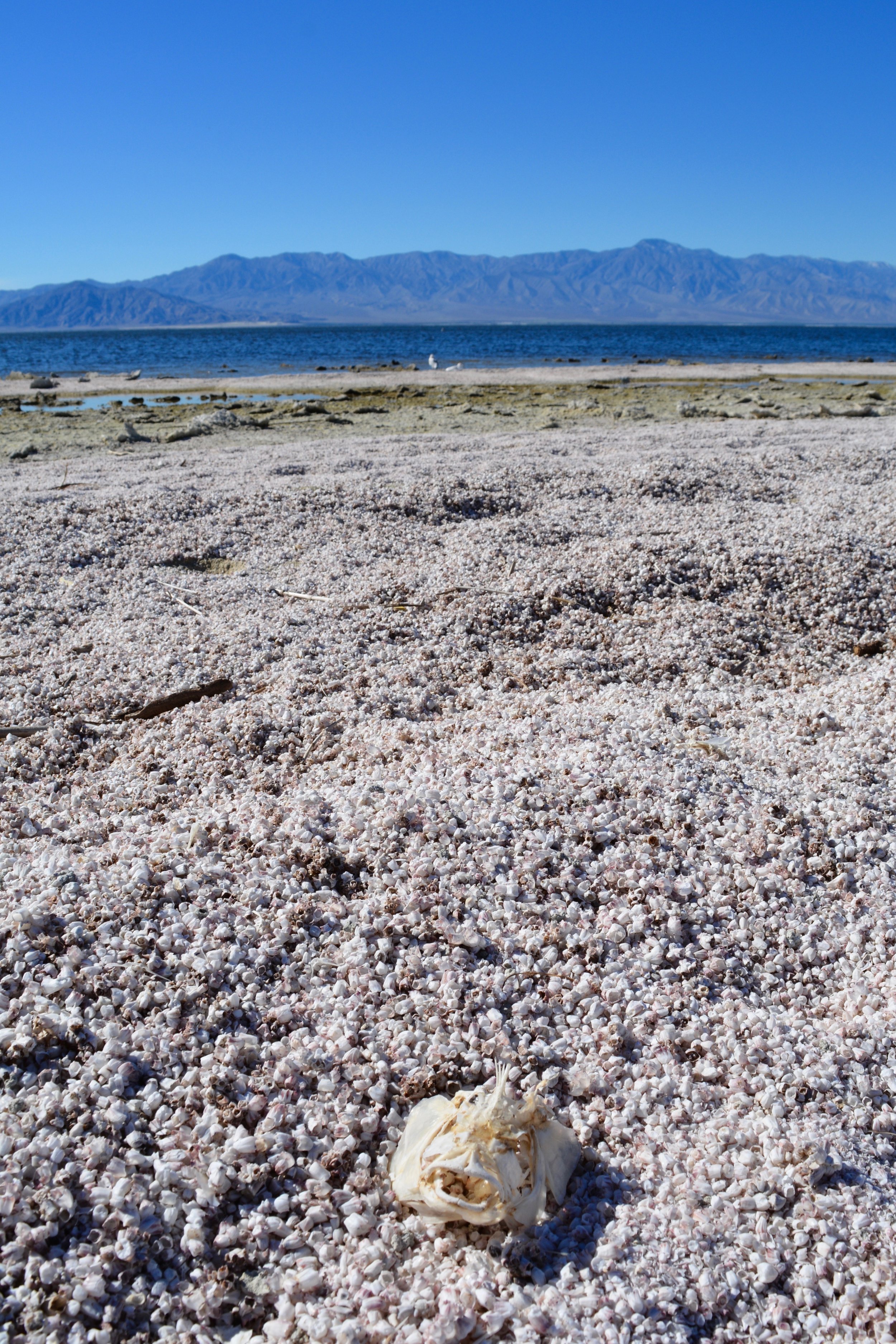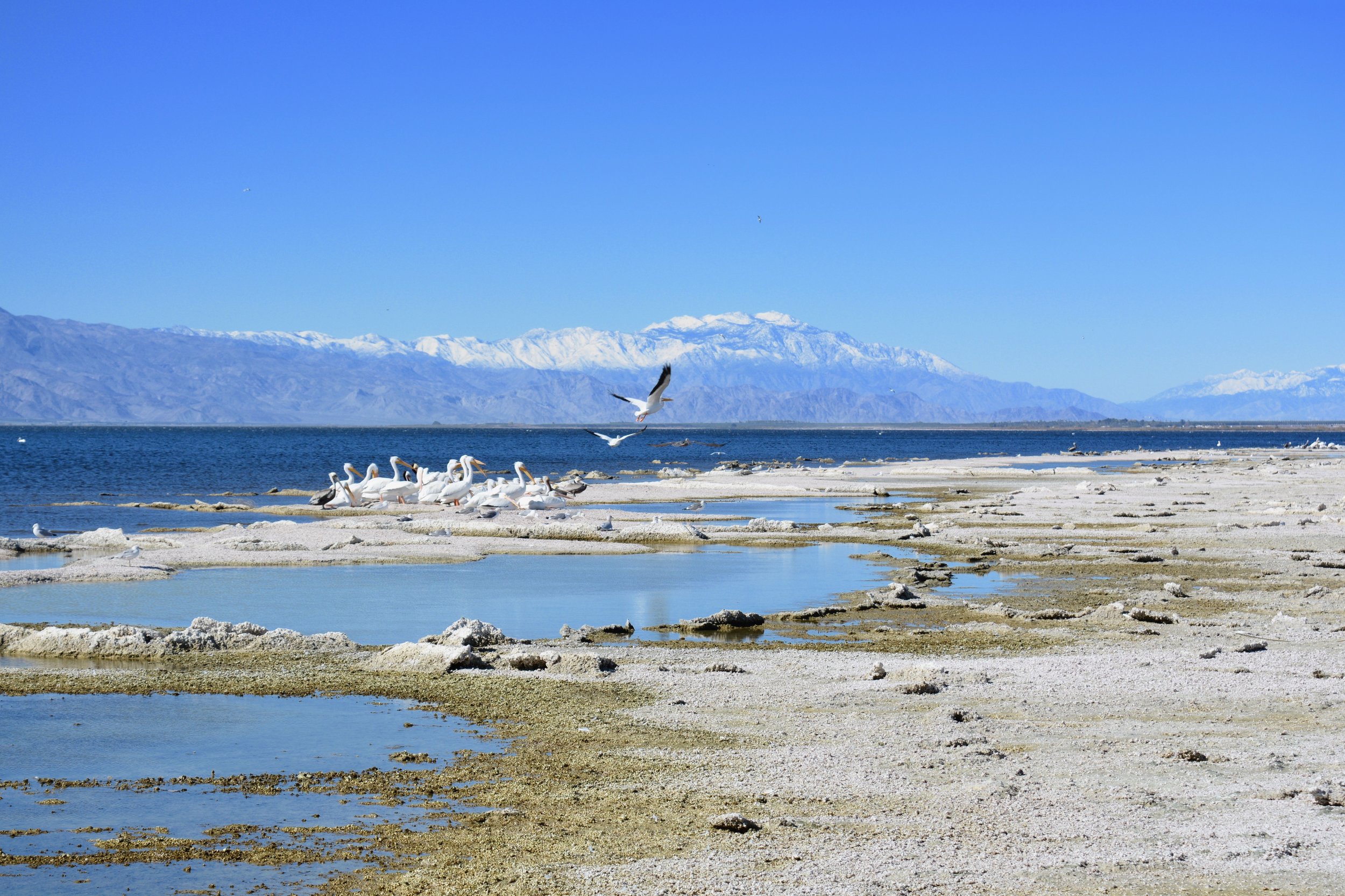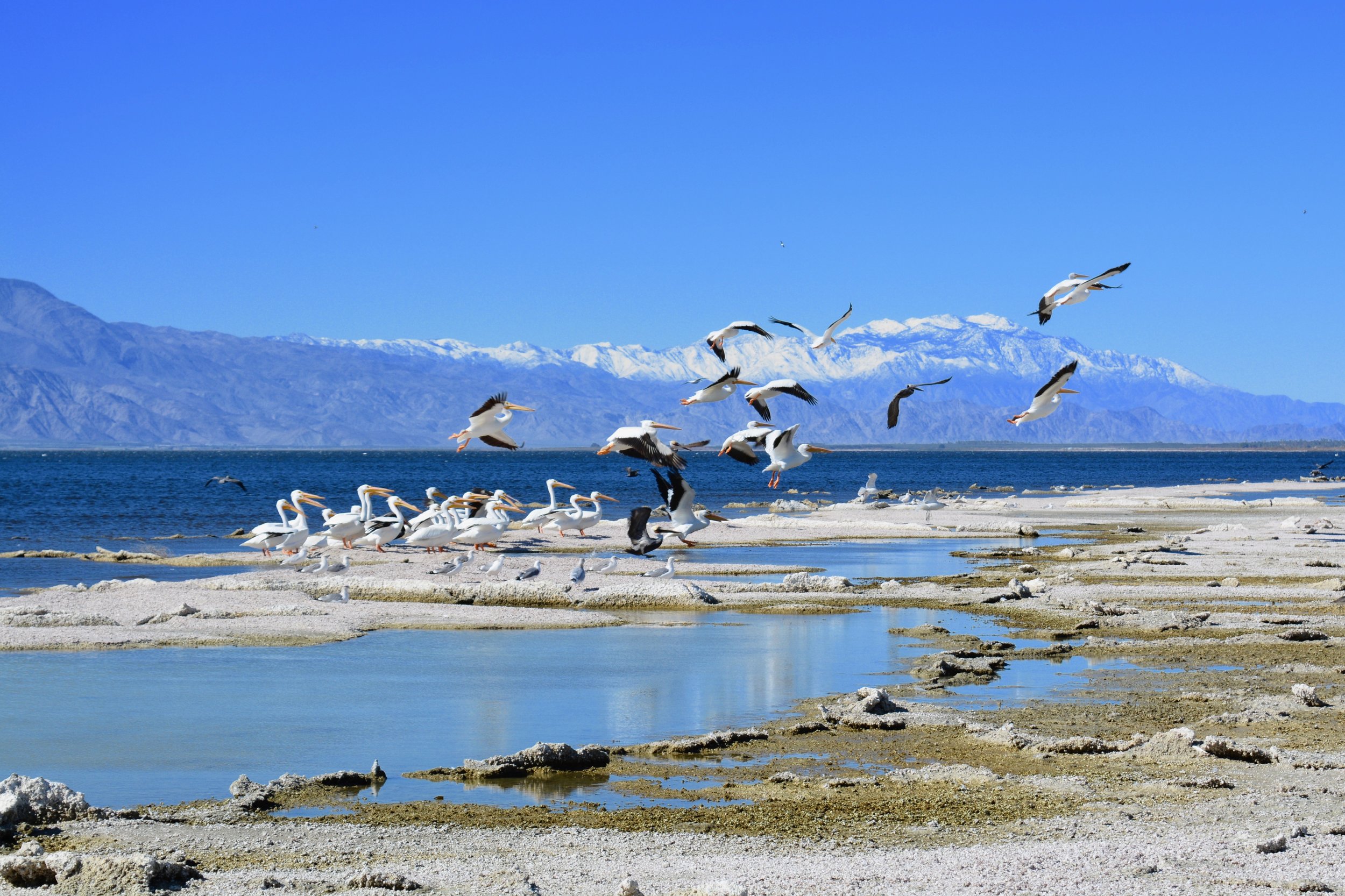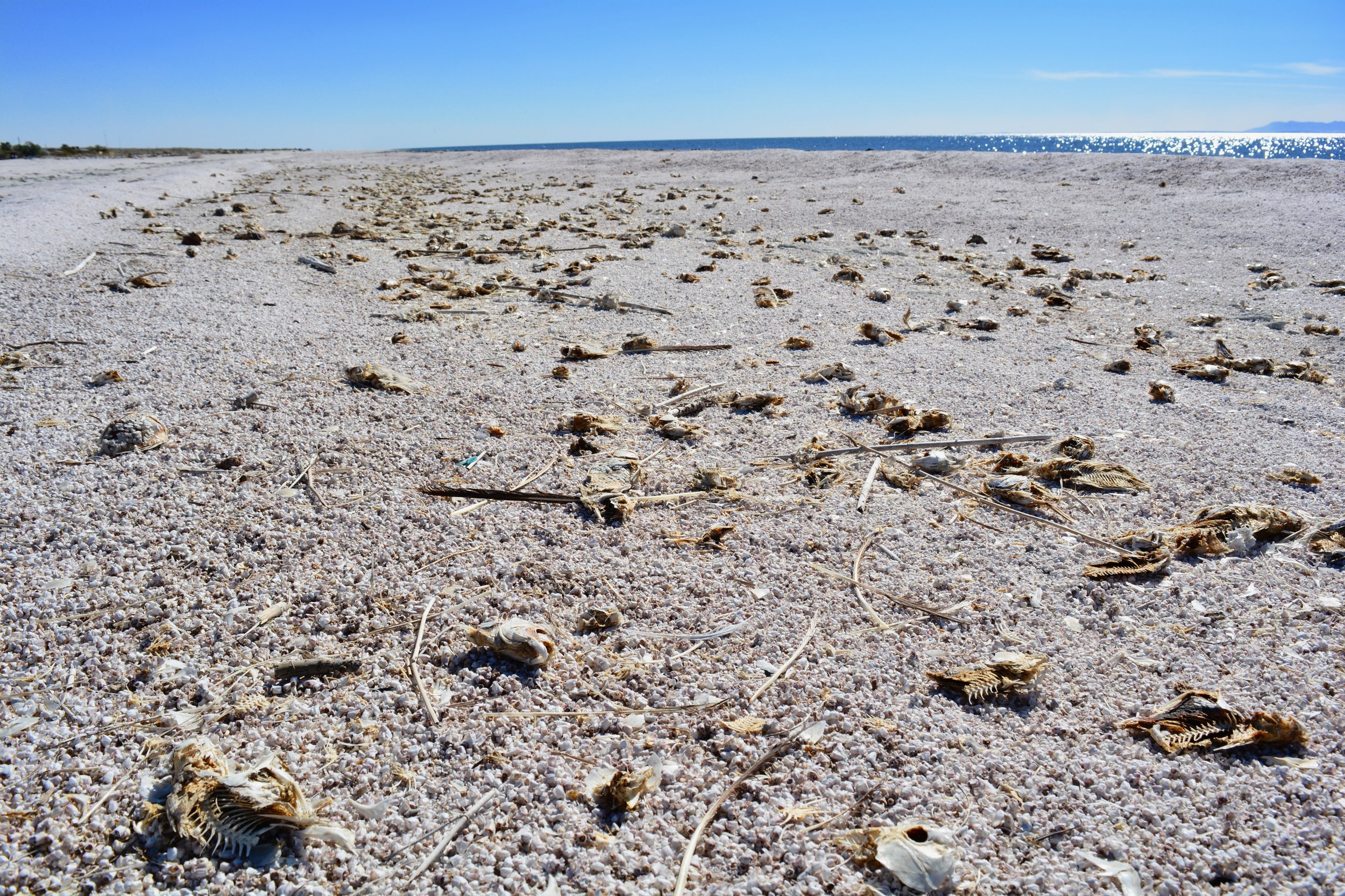Yuma, Arizona, was about as close to California as my former home of New Albany, Indiana was to Louisville, Kentucky. Within moments of leaving my hotel this morning, I was cruising down the interstate in the Golden State.
Before too long, I was in the midst of rolling brown sand dunes. On a windy day like today, that meant sand was blasting my car and all over the roadway. I couldn't believe that people were riding dirt bikes on the windy dunes, but they seemed to be enjoying themselves just fine.
My first destination was a short jaunt off of State Highway 111. I encountered Leonard Knight's creation, Salvation Mountain, shortly after passing the sign for Slab City, "The Last Free Place on Earth." I had wanted to visit the Mountain for years, and by the amount of traffic they were getting, I clearly wasn't the only one with that wish.
Salvation Mountain
Leonard, a Vermont native, landed in this California desert in 1984, beginning construction of the mountain that he worked on for nearly 30 years. Salvation Mountain, which he constructed out of clay, bales of hay, latex paint, tires, and pretty much anything else he found useful that had been discarded or donated, was named a National Folk Art Site in 2000, and a National Treasure in the U.S. Congressional Record. Leonard passed away in 2014, but the not-for-profit, Salvation Mountain, Inc. continues to work to maintain and preserve his labor of love.
Unfortunately, I picked a somewhat bad day to visit Salvation Mountain. Going inside Leonard's creation or climbing the "Yellow Brick Road" stairs that led to the top were off limits, as the recent rains had made the construction wet and vulnerable to damage. I still enjoyed seeing the site and appreciated the care that was still going into its preservation.
Next, I was headed to another "weird" destination. Sometime, ages ago, I saw a television documentary about the Salton Sea. For some reason, I never quite got it out of my mind, so when I found myself in the general vicinity of California's largest inland body of water, I went for it.
The Salton Sea was a dry basin when European settlers first came to the area. Apparently, it was actually, at one time long ago, a part of the Gulf of California. When farmers in the area needed water, a man was hired to engineer a canal from the Colorado River to the basin. After a couple tries, he got the canal to flow, but it ended up flowing for over a year and filling the basin to create the Salton Sea.
In the 1950's, the sea was a popular recreational area for Californians. However, the destruction created by a couple of hurricanes combined with the increasing salinity of the sea caused the area's eventual decline. The sea continues to increase in salinity, and is currently about 50% saltier than the Pacific Ocean. It's still quite a ways from being as salty as the Great Salt Lake, but it is inhospitable to most fish except the tilapia who live there, and they don't appear to be living the dream, either. It is, however, a popular spot for abundant bird watching. I'm sure the birds don't mind the fish snacks, either. I found it to be weird, peaceful, and oddly beautiful. :-)
After my tour of the Salton Sea, I cruised until the white salt crust no longer lined the roadway, through the cities of Indio and Palm Desert, and headed up through Santa Rosa and San Jacinto Mountains National Monument to my home for the next couple of days in Aguanga, California. And now... I'm hungry for something salty...


